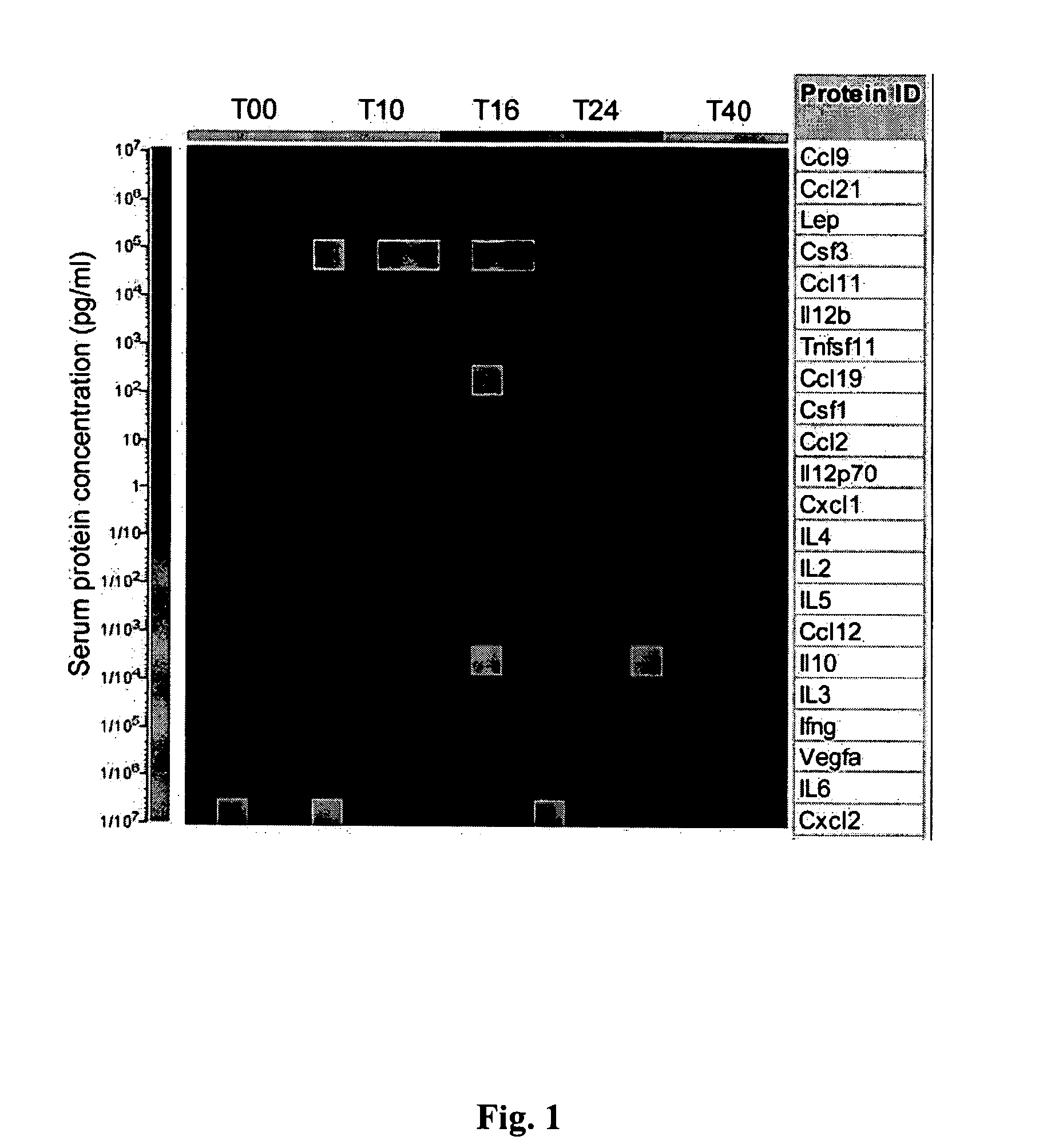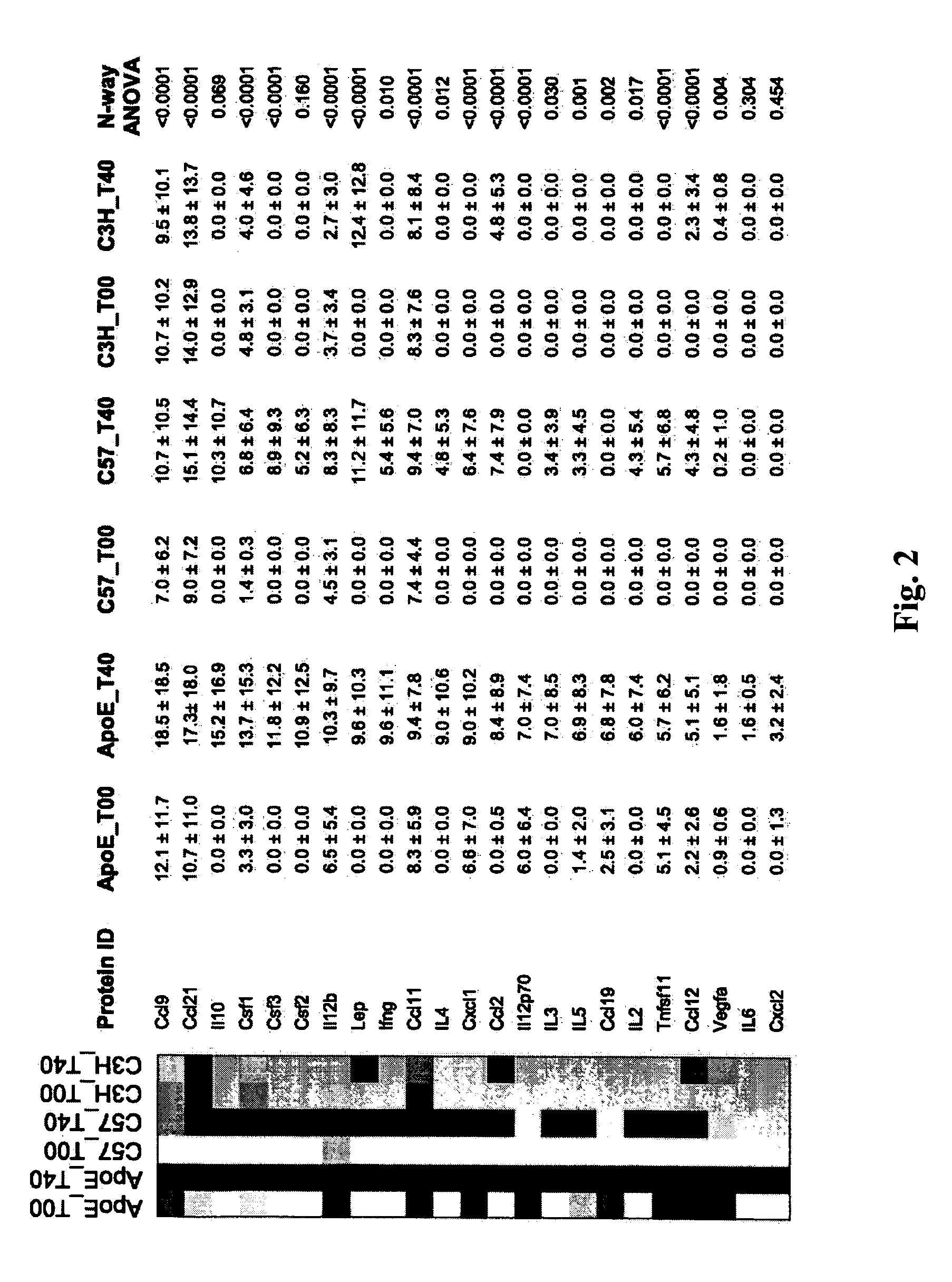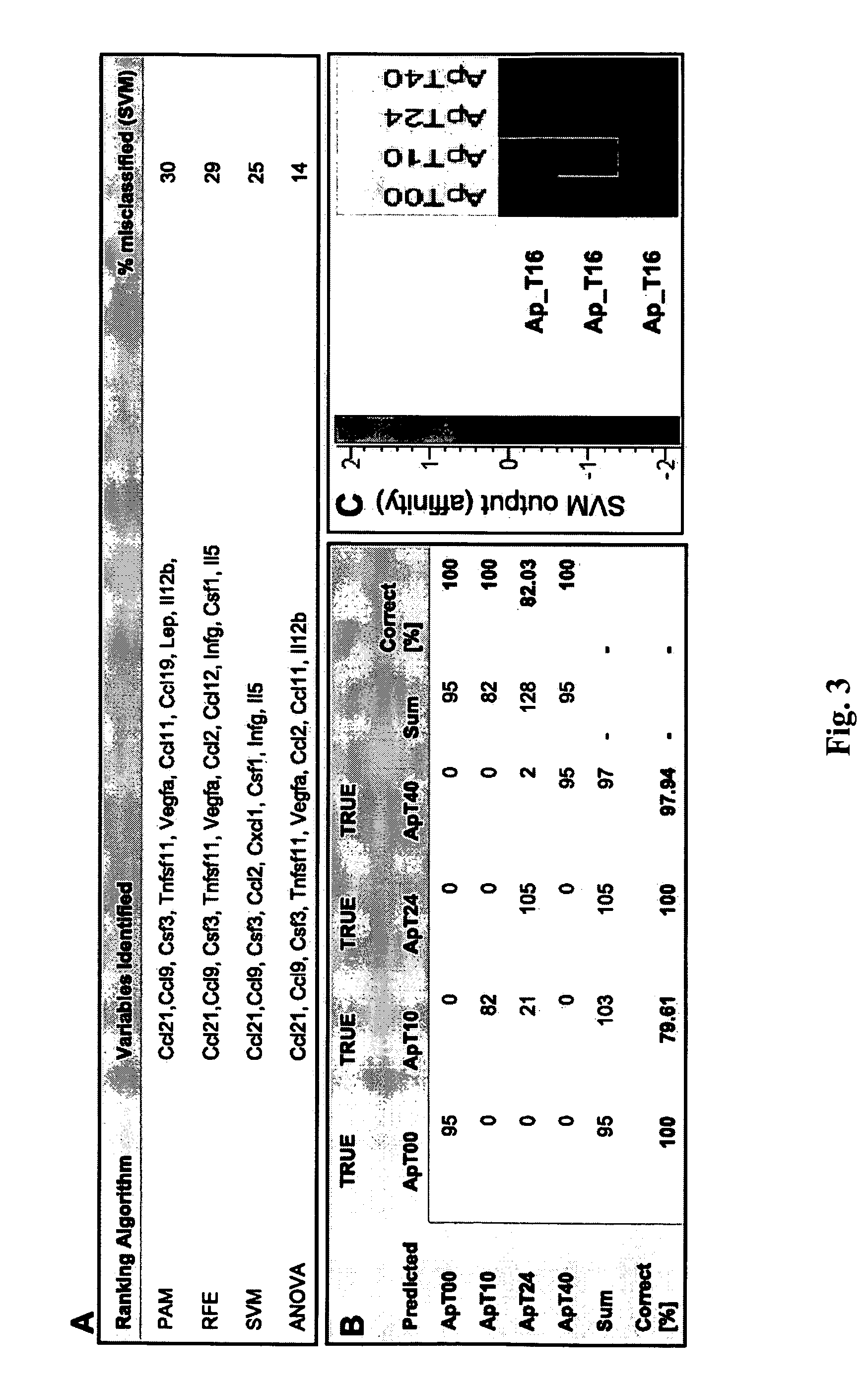Methods and compositions for diagnosis and monitoring of atherosclerotic cardiovascular disease
a technology of atherosclerotic cardiovascular disease and composition, applied in the field of bioinformatics and atherosclerotic disease, can solve the problems of inability to provide early and accurate diagnosis followed by aggressive treatment, atherosclerotic cardiovascular disease (ascvd) remains the primary cause of morbidity and mortality worldwide, and the full benefits of primary prevention are unrealized
- Summary
- Abstract
- Description
- Claims
- Application Information
AI Technical Summary
Benefits of technology
Problems solved by technology
Method used
Image
Examples
example 1
Serum Markers in an Animal Model for Atherosclerosis
[0118] Serum Biomarker Data from Mouse Protein Arrays
[0119] Given the involvement of multiple biological pathways identified through transcriptional profiling of human and mouse vascular tissue, a proof of concept study in mice was designed to examine whether a multi-analyte approach can lead to improved distinction among various stages of the atherosclerotic disease process32. The study demonstrated that quantification of multiple disease related biomarkers can provide a more sensitive and specific methodology for assessing atherosclerotic disease in mice and possibly in humans. The top serum protein classifiers identified in the study represented diverse atherosclerosis related biological processes including macrophages chemoattraction (Ccl9, Ccl2), T-cell chemokine activity (Ccl21 and Ccl19), innate immunity (IL-5), vascular calcification (Tnfsf11), angiogenesis (Vegfa), and high fat induced inflammation (Cxcl1, leptin). The s...
example 2
Protein Microarray Analysis
[0195] To assess the performance of an antibody array of different chemokines (Eotaxin, IP-10, MCP-1, MCP-2, MCP-3, MCP-4, IL-8, MIP1a, and RANTES), we used a commercially available Schleicher and Schuell protein microspot array (FastQuant Human Chemokine, S&S Bioscences Inc., Keene, N.H., US). This array platform utilizes multiple monoclonal highly-specific antibodies spotted onto standard microscope slides coated with a 3-D nitrocellulose surface. with human circulating samples, we chose a group of 11 cases known to have severe coronary artery disease by history and unequivocal positive exercise test or coronary catheterization, and 9 controls with no history and negative exercise or coronary angiogram. Circulating samples were collected and kept frozen at −80C, then thawed immediately prior to use on the array. Each sample was incubated on two replicate arrays. The 11 patient samples and 9 controls were evaluated on a total of 8 slides (8 arrays per sl...
example 3
Signature Pattern of Circulating Inflammatory markers for Accurate Prediction and Diagnosis of Human Coronary Artery Disease
[0199] Serum Biomarker Data from Human Pilot Study
[0200] Given the encouraging results obtained in Examples 1 and 2, we examined whether protein microarrays can be used to identify signature patterns of serum inflammatory proteins that can serve as highly sensitive and specific markers of atherosclerotic disease in humans. To investigate this approach we designed a nested case-control study by selecting 51 patients with clinically significant CAD and 44 healthy control subjects from a large clinical epidemiological study designed to examine risk factors and genetic determinants of atherosclerosis. Serum samples collected at the time of enrollment were used for simultaneous measurement of multiple inflammatory markers using a protein microarray. Concentrations of a subset of the analytes tested were significantly higher in case subjects. Classification algorit...
PUM
| Property | Measurement | Unit |
|---|---|---|
| median time | aaaaa | aaaaa |
| concentration | aaaaa | aaaaa |
| Physical examination | aaaaa | aaaaa |
Abstract
Description
Claims
Application Information
 Login to View More
Login to View More - R&D
- Intellectual Property
- Life Sciences
- Materials
- Tech Scout
- Unparalleled Data Quality
- Higher Quality Content
- 60% Fewer Hallucinations
Browse by: Latest US Patents, China's latest patents, Technical Efficacy Thesaurus, Application Domain, Technology Topic, Popular Technical Reports.
© 2025 PatSnap. All rights reserved.Legal|Privacy policy|Modern Slavery Act Transparency Statement|Sitemap|About US| Contact US: help@patsnap.com



